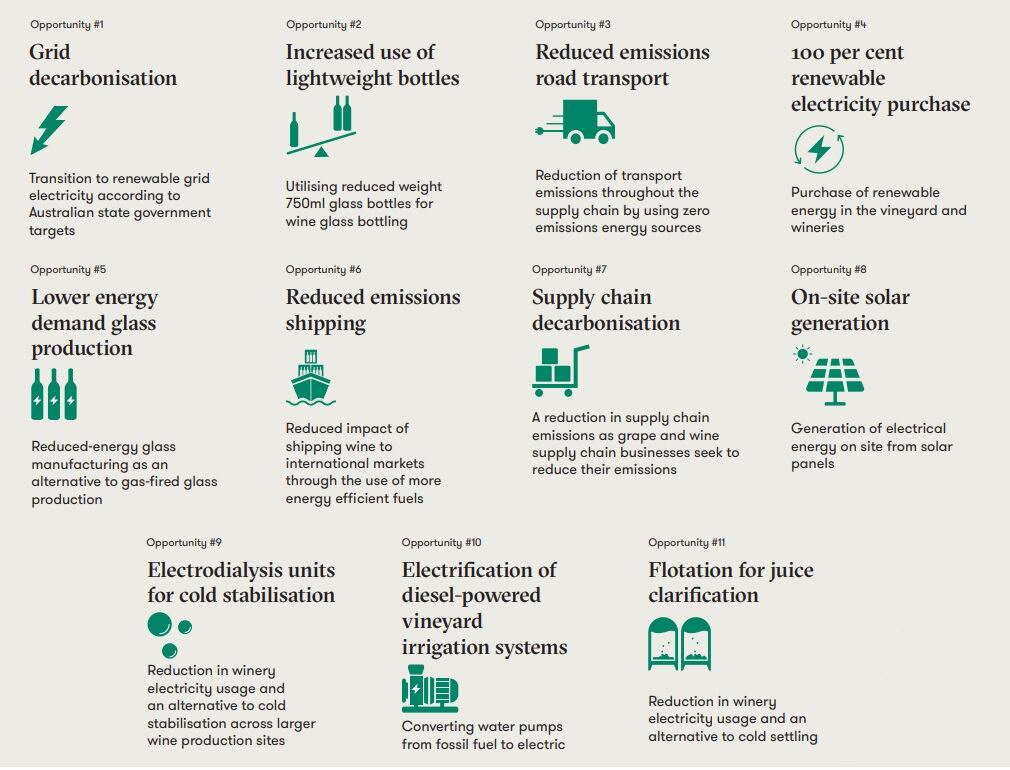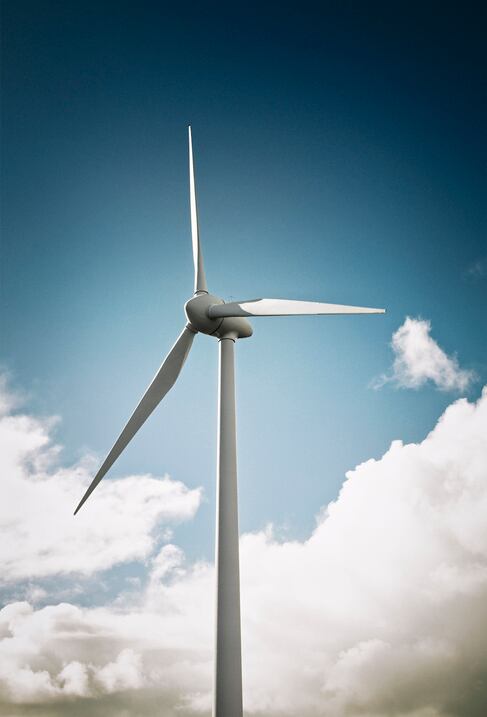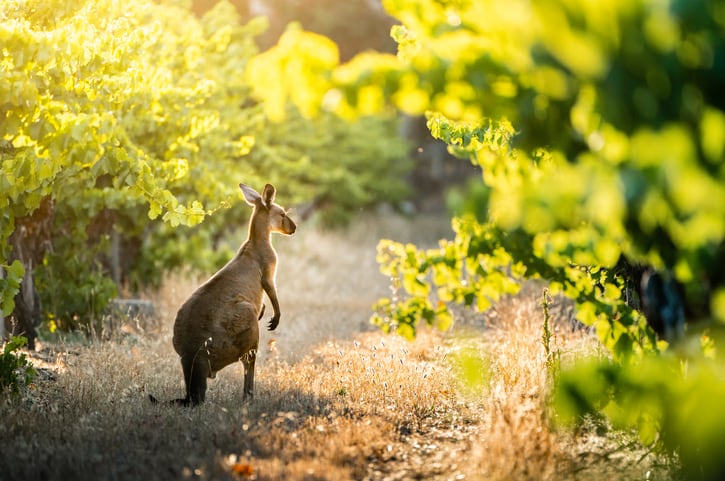While it might seem a lofty goal, Australia sees a ‘realistic opportunity’ to target emissions generated in the vineyard, winery and supply chain.
Furthermore, the country sees the decarbonisation of the grape and wine sector as ‘critical’ – aside from the threat of climate change on livelihoods and the future of the planet, it knows that international wine markets (which buy some 60% of the country’s wine) are demanding sustainable practices.
“The roadmap is our response to today’s challenging landscape where producers and organisations are feeling regulatory, market and social pressures to reduce the carbon footprint of both their own operations and the goods they produce,” said Martin Cole, CEO of Wine Australia. “
These pressures are set to grow – sustainability credentials will soon be a ticket to play, rather than a marketable add-on.
“Transition to a low-carbon future will become a part of doing business, and we need to be ahead of that curve. We should aspire to be growing grapes, making wine, packaging it and distributing it in a way that doesn’t impact future generations.”
Understanding where carbon emissions come from
The Australian wine sector emits around 1,770,997 tonnes of carbon dioxide equivalent (t CO2 -e) to the atmosphere a year, excluding soil emissions and fermentation emissions (This is roughly equivalent to the emissions produced from a jet plane doing 609 laps of the world).
With more than half of the wine produced in Australia exported (around 59% of the total produced – reaching 621m liters exported in the last year) transport of wine could be expected to be a sizeable factor.
But while this does account for a chunk of 29% of emissions, it’s actually the industrial processes and supply chain which includes emissions associated with products and services from suppliers (such as the extraction of raw materials, production and manufacturing of goods and their transport) which makes up the biggest contributor at 49%.
11 initiatives
Taking these stats into account, the Emissions Reduction Roadmap outlines ‘effective and practical steps’ to reduce the sector’s carbon emissions by 40% by 2030 (against a 2021 baseline).
The roadmap for emissions reduction has been developed by industry body Wine Australia (an Australian Commonweath Government statutory authority) with global sustainability advisory Edge Impact, in consultation with more than 200 members of the grape and wine community.
It’s described as a ‘key starting point’ for decarbonisation efforts and provides an ‘industry-endorsed and science-backed pathway’ to reducing carbon emissions.
The roadmap outlines 11 initiatives that can lead to both emissions reduction and cost savings – all of which have a role to play.
But the greatest impact can be achieved by an increased uptake of renewables into each state’s electricity grid (grid decarbonisation), increased use of lightweight glass bottles and less energy intensive glass production, and transition to reduced emissions road transport.

Big impact 1: Grid decarbonisation (reducing 159,993 t CO2 -e between 2021 and 2030)

The expected increase of more renewables into each state’s electricity grid (grid decarbonisation) will result in a reduction of 159,993 t CO2 -e, according to Wine Australia.
While the electricity grid may be out of the control of wineries, the simple fact remains that it's still how the biggest impact will be made.
Tasmania’s electricity grid already produces more renewable energy than is consumed within the state over a yearly period. South Australia, which contains half of Australia’s wine production, is projected to achieve 100% cent net renewable electricity before 2030.
Meanwhile, the state governments of New South Wales, Victoria and Western Australia have established 2030 renewable electricity and/or emissions reduction targets.
Big impact 2: Lightweighting wine bottles (reducing 123,081 t CO2 -e between 2021 and 2030)
If 40% of wine bottles can become lightweight by 2030, this will result in a total emissions reduction of 123,081 t CO2 -e, says Wine Australia.
'Lightweight' in this context means switching over to a 380g 750ml bottle (from a 500g 750ml bottle).
The modelling includes the emissions reduction benefits associated with production, transportation and end-of-life of lightweight glass bottles.
Meanwhile, other initiatives that shift wine containers to alternative lower emissions packaging materials - such as bag-in-box and aluminium cans - are important alternatives to consider.
Big impact 3: Reduced emissions and road transport (reducing 114,801 t CO2 -e between 2021 and 2030)
The uptake of lower and reduced emissions road transport will produce an emissions reduction of 114,801 t CO2 -e, says the roadmap.
Reduced emissions road transport has been modelled based on stated 2030 and 2050 Australian and international decarbonisation targets. Accordingly, the percentage of reduced emissions trucks transporting vineyard and winery inputs and produce will increase over time.
The transition of trucks to electric or hydrogen vehicles is outside the control of the wine sector. However, it is expected that the trucking industry will increase efforts to decarbonise their operations as more options for electric or hydrogen trucks enter the market, and repowering and refuelling infrastructure is installed across Australia.
Big impact 4: 100% renewable electricity purchase (reducing 85,967 t Co2 -e between 2021 and 2030)
This model assumes wineries and vineyards take up renewable electricity in a staged progression from 2023 to 100% in 2028.
The purchase of 100% renewable electricity will help all businesses to reduce emissions from operations.
The emissions reductions are obviously greater for businesses located within Australian states where the mains supply electricity grid is still largely reliant on fossil fuel electricity generation, such as Western Australia, Victoria and New South Wales.
Big impact 5: Lower energy glass production (reducing 48,909 t CO2 -e between 2021 and 2030)
Glass wine bottle manufacturers are increasing the content of recycled glass in their products and to lowering the energy used in glass production, reports Wine Australia (either by improving energy efficiency or switching from gas to renewable energy sources).
Such measures do, however, require upgrades to glass production infrastructure: which are likely to occur over an extended timeframe due to the high cost involved.
Back to the vineyard...
But – with so many factors outside wineries’ control – can individual businesses really make an impact?
Yes, says Wine Australia, highlighting that wineries and vineyards still make up 22% of emissions for the sector.

“Despite emissions from grape and wine production being less than that of transport and packaging, there are still significant emissions associated with vineyards and wineries," notes the organization in its roadmap.
"That’s why it’s important for growers and winemakers to take action to drive down their emissions.”
Furthermore, it's important understand that there are multiple benefits for individual wineries to sit up and take note.
Being sustainable offers efficiencies: “Understanding the key sources of emissions within your business will help you to target inefficient processes. Simple, low-cost initiatives can assist businesses to improve efficiency of heating and cooling systems, lighting, winemaking, irrigation and transport.”
It also saves money on energy – an increasingly important consideration. And it could ultimately become a necessity for long-term success - with international wine markets requiring or requesting sustainability information.
The highest carbon contributors are electricity usage, fuel emissions (tractors, diesel irrigation systems), nitrogen-based fertilisers, and leakage of gases from wine cooling and storage systems.
Consequently, winemakers should focus their efforts on increasing electricity efficiency, with the opportunity for emissions reductions through switching to non-fossil fuel alternatives and actively working with suppliers who are taking action to decarbonise.
Vineyard managers will benefit from focusing on both electricity and vineyard fossil fuel sources. Increasing efficiencies in irrigation and tractor use are simple measures to reduce consumption and therefore emissions.
Other recommended actions include converting all diesel and petrol powered infrastructure to electric equivalents, as they become available, and investigating the use of vineyard solar or the purchase of renewable electricity.
Australia's Emissions Reduction Roadmap can be found here.


